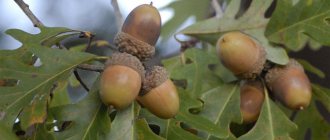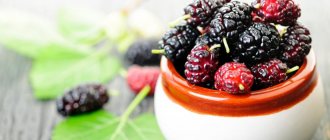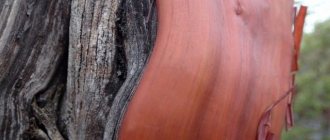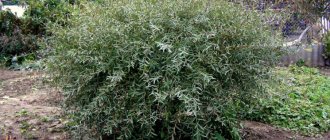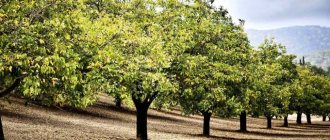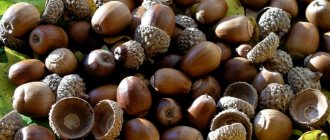The homeland of the mulberry tree is Persia. Gradually, the plant began to spread in Turkey and other Asian countries, appeared in Transcaucasia, and reached Europe by the 12th century. Peter I brought mulberries to Russia. The popularity of the plant is associated with the silk production industry. Mulberry leaves were used to feed the silkworm worms. Today the tree grows in various regions of the world: Romania, USA, Lebanon, Southern Europe, China, Tajikistan, the Middle East, Russia, Bulgaria, North Africa, and the Indian subcontinent. It is prohibited to grow mulberries in some North American cities due to a high allergic reaction to the pollen of the flowers, which can cause an asthma attack.
Mulberry trees and shrubs belong to the Mulberry family and can live up to 200 and even 500 years.
Another name for the plant is mulberry. The trees bloom with very small, clustered, white flowers with a lot of pollen. One cluster of flowers later produces one berry. The fruits ripen at the end of July, but there are also earlier varieties. Mulberries are up to 5.5 cm in length, fleshy and juicy, white, pink and black. The fruit tastes sweet and aromatic, with a slight sourness. The juice leaves stains on the skin and clothes that are difficult to remove.
Mulberry varieties
There are 2 main types of mulberry - white and black, which are divided into varieties. The most popular of them are the following:
- Ukrainian-6, bears fruit in June with large black matte berries up to 4 cm in length. The fruits taste sweet, tolerate transportation well and can be stored for up to 2 weeks. The tree is frost-resistant down to -30°C;
- Hartut, the tree bears fruit in the 3rd year of life. The harvest is stable and high, the fruits are large, up to 5.5 cm in length, black in color, widely used in cooking and winemaking;
- Smolenskaya rosea produces medium-sized, red or pink berries. The fruit tastes sweet and aromatic. The tree is distinguished by beautifully shaped leaves.
- White honey, produces elongated white fruits up to 3 cm in length. The taste is sweet, with a honey flavor. The fruits are soft and do not tolerate transportation well. The tree tolerates low temperatures well and produces a stable, good harvest;
- Merezhevo, produces large fruits of a pinkish-cream hue, sickly sweet in taste. The berries fall off the branches, are not stored for long and do not tolerate transportation well;
- Fruit-1, juicy, large berries of white color, taste sweet and sour. The tree produces a harvest in June. The fruits are dense and tolerate transportation well. Feature - when it rains, the berries acquire a pink tint, but the taste and consistency do not change;
- Plodovaya-4, a tree with good productivity, produces large black fruits up to 4 cm in length. The taste is sweet, refreshing, and tolerates transportation well. The tree is frost resistant;
- Shelly, the tree is decorative and produces large fruits up to 5.5 cm in length. The berries are black, shiny, and tolerate transportation very well;
- Black Baroness, large fruits up to 4 cm in length, dark black in color, very sweet and aromatic. The harvest is harvested in July, the shelf life of the berries is very short - 12 hours. Very good yield and frost resistance down to -30 degrees;
- Black Prince, the tree tolerates frost and drought very well, and is resistant to disease. The berries are juicy and large, up to 5 cm in length, black in color, with a honey taste. They tolerate transportation well.
Among the decorative varieties, it is worth noting the spherical, pyramidal, golden, weeping, large-leaved and Tatarian mulberries. These trees will perfectly decorate the garden and personal plot. There are ornamental mulberry varieties that can be grown in large pots or containers.
Mulberry in landscape design
Mulberry has found wide application in landscape design. Breeders have developed many varieties for these purposes. Trees not only decorate gardens and parks, but also strengthen the coastal areas of canals and reservoirs, and are planted as shelterbelts.
Amateur gardeners can grow mulberries on their own in their garden plots. Seedlings can be purchased in specialized stores or nurseries. An unpretentious tree will require a minimum of care and will provide a healthy and tasty harvest of berries.
Calorie content and vitamins of mulberry
100 g of mulberry contains 53 kcal, vitamins A, K, E, C, group B, beta-carotene, niacin, alpha-carotene and other beneficial substances:
- proteins - 0.7 g
- carbohydrates - 12 g
- ash - 0.9 g
- water - 82.7 g
- dietary fiber - 1.6 g
- organic acids - 1.2 g
- calcium - 24 mg
- potassium - 350 mg
- magnesium - 51 mg
- sodium - 16 mg
- mono- and disaccharides - 12 g
In the shade of the mulberry tree
The mulberry is considered a biblical tree, because under its spreading crown, Jesus Christ himself once sought salvation from the sun.
In many countries, the mulberry is a sacred plant; Eastern sages call it the “tree of life”, and the berries are “royal”.
Amulets and amulets are made from mulberry wood; mulberries are specially planted in courtyards and open areas so that they can set a table under its foliage and gather the family around it.
It is believed that the mulberry protects everyone under it from the influence of evil forces, which is why you can so often see benches located in the shade of the mulberry tree.
Today, mulberry plantings are widespread everywhere, although the Middle East is considered to be their historical homeland.
The tree is unique in its unpretentiousness and endurance. It easily withstands droughts, heat over 30 degrees Celsius and frosts minus 35.
The height of an adult plant reaches 15 meters, and the mulberry lives no less, but about 400 years! At the same time, it regularly bears fruit and pleases all people with incredibly tasty and healthy berries that look like blackberries.
The benefits and harms of mulberries
Fresh mulberries cleanse the liver and intestines of congestion, improve digestion, and have a mild laxative effect. The fruits are used for swelling of internal organs and limbs due to their diuretic effect. Berries promote increased sweat production, which is especially necessary during fever and colds. During such profuse sweating, the skin is cleansed of toxins.
Dried fruits are used to prepare soothing infusions that help normalize mental state, improve sleep and relieve the effects of stress and depression. Freshly squeezed mulberry juice, ointments, decoctions and infusions based on the bark are used for skin problems, treatment of eczema, psoriasis, burns, lichen, abrasions and wounds. Ointment from the bark helps with acne and open comedones.
Antioxidants contained in the fruit protect tissue and skin from premature aging, increase the body's resistance to viruses, improve vision and strengthen the retina. You can also eat unripe mulberries; they help with diarrhea, nausea and general ailments. The berry is useful in moderation during pregnancy and for the mental development of children and adults. The fruits improve blood formation and strengthen the muscles of the heart.
The leaves of the tree, in fresh and dried form, have regenerating and disinfecting properties; decoctions are prepared from them, used for swelling, cough, mucus in the respiratory tract and accumulation of urea.
Eating mulberries should be done in moderation so as not to cause gastrointestinal upset. You should not eat fruits if you have allergies or individual intolerances; overeating berries is harmful for hypertensive patients and people with diabetes mellitus of degrees 1 and 2.
Popular questions and answers
What is another name for mulberry?
In the southern regions of our country, in which it grows, mulberry is called differently - fig tree, mulberry, tyutina, mulberry, mulberry. Another name for the plant is mulberry, or mulberry tree.
Are dried mulberries healthy?
Dried berries are just as healthy as fresh ones, but it is worth keeping in mind that their calorie content is much higher due to the high concentration of sugars. Therefore, it is recommended to eat dried mulberries in very limited quantities.
What to cook from mulberries?
Mulberries are very tasty fresh; they are widely used in cooking, added to pies, yoghurts and desserts. The fruits make very tasty wine, vodka, liqueurs, syrups, tinctures, and artificial bekmes honey. Jams, preserves, pastes, compotes are made from mulberries, ice cream, sorbet, jelly, jellies and cocktails are made. The roots and leaves are used to prepare healthy and aromatic tea and medicinal mixtures.
Berries are combined with various products:
- Walnut;
- vanilla;
- wheat and rye flour;
- muesli and oatmeal;
- lemon;
- blackberries, black currants, elderberries;
- sugar;
- venison, game, hare;
- blackcurrant, elderberry and blackberry liqueur;
- port wine, cognac;
- cream, ice cream;
- cow's and soy milk;
- yogurt, butter.
Mulberry jelly
Ingredients:
- 4 tbsp. l. lemon juice;
- 2 cups mulberries;
- 3 tbsp. l. starch;
- ½ cup Sahara;
- 2 l. water.
Preparation:
- Remove the tails from the berries, rinse in cold water and drain in a colander.
- Grind the mulberries through a sieve or use a blender.
- Pour a glass of cold water over the starch.
- Pour water over the berry puree, add sugar and bring to a boil.
- Pour starch in a thin stream and mix, add lemon juice.
- When the mixture boils, remove from the stove.
- Pour the jelly into a jug and let cool.
Mulberry ice cream
Ingredients:
- 6 tbsp. l. yogurt;
- 1 banana;
- 100 g mulberries;
- 1 tbsp. l. rose jam.
Preparation:
- Rinse the berries and remove the stems, place in a blender bowl.
- Peel and chop the banana, add to the blender with the mulberries and grind until smooth.
- Add yogurt and jam to the mixture, beat again until smooth.
- Pour into molds and cover with cling film.
- Leave the ice cream in the freezer for 4 hours or overnight.
Use in traditional and folk medicine
In traditional Chinese and Tibetan medicine, preparations from white mulberry have been used for many centuries to treat inflammation, diseases of the joints, kidneys and liver. From the bark and roots of the tree, the Chinese make a natural analgesic, a medicine for arterial hypertension, and also diuretics. In Europe, blood purification medicines, expectorants, and anti-worm medicines were prepared from the bark of the black mulberry tree.
Mulberries are useful for treating anemia, colds, atherosclerosis, heart and kidney diseases. Researchers have determined that mulberry leaves contain antioxidant substances, as well as components that lower bad cholesterol levels and prevent Alzheimer's disease.
Juice from berries perfectly quenches thirst. It is recommended for high fever and lack of appetite. Mulberry juice is useful for gargling with a sore throat, and it is also a good medicine for healing ulcers and inflammation in the mouth. Mulberry juices are also useful for tachycardia, arrhythmia, atherosclerosis, bronchitis, asthma and kidney disease. They are added to tea for colds and sore throats.
Herbalists recommend black mulberry preparations to combat breast and ovarian cancer. Mulberry leaf tea reduces sugar levels in the bloodstream, and the unripe berries are known in Eastern medicine as a remedy for gastritis and intestinal colic.
An alcoholic infusion of ripe fruits is used as a diaphoretic and diuretic, and a decoction of dried berries is useful for coughs and flu.
Berry tincture
Remove stems from a handful of berries and rinse. Place in a glass container and pour in alcohol (to cover the berries). Close tightly and leave in a dark place for at least 2 weeks. Strain the finished infusion through cheesecloth. Take 1-2 tbsp. l. after meal. This remedy is useful for strengthening the immune system.
Decoction of leaves or bark
Pour three tablespoons of dry leaves or tree bark (you can take a mixture) with 2 cups of boiling water. Cook in a water bath for about 30 minutes. Remove from heat, wrap, leave for another 15 minutes. Strain and take half a glass morning and evening. This remedy is useful for the treatment of colds, as well as for the prevention of respiratory diseases.
Tea against diabetes
The recipe for this drink is well known in Japan and Korea. The finished drink is taken after meals to lower blood sugar. For 1 g of white mulberry leaves, 100 ml of boiling water is needed. The tea is infused for 3-5 minutes.
Useful properties of mulberry
Mulberries, juice, leaves and bark are used for various health problems:
- anemia
- dyskinesia
- enterocolitis
- dysentery
- dysbacteriosis
- heart disease
- myocardial dystrophy
- burns and ulcers on the skin
- dermatitis
- menopause
- helminthiasis
- tonsillitis
- pneumonia
- bronchitis
Brief summary
- The benefits of mulberry are explained by its rich vitamin and mineral composition, where ascorbic acid, potassium, silicon and other compounds predominate.
- Thanks to selection, the crop can grow in most climatic conditions, and its natural habitat is the subtropics.
- The shade of the fruit varies in color from white to almost black tones. The color is determined by the concentration of substances called anthocyanins, which have antitumor effects.
- Due to the presence of organic acids in the chemical composition of the product, abuse can lead to diarrhea.
- Berries are highly perishable, and when choosing a storage method, it is worth taking into account the destruction of unstable vitamin substances during heat treatment.
- Mulberry, whose health benefits and harms are interconnected, is suitable for the treatment of diseases associated with the functioning of the cardiovascular system, but only after consulting a doctor.
Mulberry storage
Berries can be stored ground with sugar, frozen and dried. It is important to choose only ripe fruits without signs of spoilage. Dried leaves are also stored for the winter. Fresh mulberries can be stored in the refrigerator for up to 3 days.
Drying berries
- Rinse the fruits and scatter them on a towel, leave to dry.
- Line trays or baking sheets with clean thin paper, place mulberries in a single layer and cover with gauze.
- Take the raw materials outside and leave them in a sunny, warm place. Move indoors at night.
- Take the berries out to dry every day for 2 weeks, stir occasionally. If the weather is cloudy, dry indoors.
Drying mulberries can be done in the oven at minimum temperature for 40-60 minutes. The door should be slightly open, the berries should be stirred 2-3 times during the entire drying period. The finished fruits are stored in glass containers for 2 years. Frozen mulberries are good for food for 1 year, ground with sugar - 2 years.
How to use during pregnancy, lactation and for weight loss
The benefits of mulberries are clearly evident for pregnant women; the fruits have a positive effect on both the woman and the unborn child. However, you need to remember the dose; the normal amount for those expecting a child should be no more than 300 g of berries. The fruits must be ripe - unripe mulberries are harmful as they cause diarrhea.
During lactation, the benefits of the white variety are enormous, the fruits:
- help maintain normal hemoglobin in the bloodstream;
- calm the central nervous system;
- stimulate milk formation;
- improves the newborn's immunity.
However, it is necessary to introduce the product into the menu gradually, carefully observing the child’s behavior. Sometimes children may have a negative reaction, and then the berries will only do harm.
Mulberry is very low in calories and is therefore useful when consumed as part of a diet. The properties of berries accelerate metabolic processes, so extra pounds evaporate without problems. A dietary diet has been developed - during the week you need to consume mainly this berry, supplementing it with:
- low fat meat;
- boiled eggs;
- kefir drink.
In just 3 days, the fruits, with physical activity and abstinence from harmful foods, will help you lose 2-3 hated kilos.
Growing mulberries in the country
Mulberry trees are divided into male and female. When purchasing seedlings, it is better to purchase those that have already bear fruit once in order to be sure of their yield. Male trees do not produce fruit and are intended only for decoration and landscaping.
The most suitable time for planting mulberries is spring and early autumn. The place where the tree will grow should be well lit. Southern slopes protected from the wind are ideal. Mulberry can grow on any soil, but prefers well-drained loams. Landing is carried out in several steps:
- Prepare the planting hole a few days in advance so that the soil can stand. The dimensions of the hole should be 70x70 cm and up to 50 cm in depth;
- mix the soil that remains from digging the hole with a bucket of humus and place half in the hole;
- Place the seedling on top and straighten the roots, sprinkle the rest of the soil on top;
- compact the soil around the trunk and water it;
- mulch the soil to protect the roots from freezing in winter.
The distance between seedlings should be 5 meters, if these are bush varieties - 3 meters.
Description
A large number of varieties are known, but they are divided into white, red and black mulberries. The berries differ in color and slightly different taste. The healing qualities of the fruit are preserved, regardless of the varietal type. The plant grows in temperate climates, and produces fruits in early spring and until the end of summer.
On a note! Unripe berries are greenish and actively growing, and when they reach their maximum size, they acquire a shade corresponding to the varietal type.
Compound
The benefits of mulberries have made them popular in alternative healing and the culinary world. Juices, tea drinks, jellies, confiture are produced from the berries, they are included in pies, dessert dishes, and mulberry wine is also prepared. Photos of a tree and mulberry berries demonstrate the beauty of the plant crop.
The mulberry product contains beneficial elements, phytonutrients and polyphenols. The basic ones are:
- Zeaxanthin.
- Lutein.
- Anthocyanins.
- Resveratrol.
The daily dose of berries includes the following vitamins:
- C – 61%.
- K – 10%.
- B2 – 6%.
- E – 4%.
- B6 – 3%.
Minerals:
- Fe – 10%.
- K – 6%.
- Mg – 5%.
- P – 4%.
- Ca – 4%.
The berry contains 43 calories per 100 g.
Useful qualities
The healing effects of mulberry fruits on the body are manifested both in unconventional treatment and in culinary masterpieces. Mulberry berries have a positive effect on the immune system, this is an excellent prevention of colds, viral and infectious diseases - berry jam would be an excellent solution in the fall.
Among the healing properties:
- It normalizes metabolism and helps the gastrointestinal tract function properly—the black variety is especially useful here.
- Helps with gastritis with low production of gastric juice, diarrhea.
- Eliminates complications of poisoning.
- Makes blood vessels stronger and has a positive effect on the myocardium.
- Cleanses the blood and eliminates toxic substances, thereby cleansing the liver.
- Helps with joint pathology.
- Treats heartburn and inflammation of the oral cavity.
- Normalizes blood pressure and eliminates anemia.
- Has a positive effect on the central nervous system.
Beneficial properties for humans are manifested in protection against cancer, as it fights the development of malignant neoplasms.
The particular benefit of white mulberry or mulberry for women is the positive effect of the product during menstruation or menopause.
Attention!
Mulberry relieves pain and irritation, replenishes the lack of useful microelements, and stops severe blood loss.
For representatives of the stronger sex, the berry is useful because it helps the production of testosterone and protects the body from pathologies. The fruits have a positive effect on potency and prevent prostate cancer.
Mulberry is good for children to consume. It enriches it with vitamins, ensures its full growth and development, and the berries are simply aromatic. It is useful to give children berry jam. You can give berries to children only from 2 years old. The product contains small bones, they negatively affect the child’s delicate stomach and irritate it.
Tree care
Mulberry is very hardy, but with good care it will produce a bountiful harvest and decorate your area. The trees tolerate crown formation and pruning very well and can withstand severe frosts. Only annual shoots may be affected. In cold regions, the shoot forms a bush that needs pruning in winter.
Trees and bushes can grow up to 10-15 meters in height. You can constantly trim the crown and grow the tree up to 1.5 meters. This makes it more convenient to care for it and harvest. But you shouldn’t get too carried away with pruning; the mulberry may stop bearing fruit.
When berries begin to form, mulberries need feeding, especially when growing on sandy soil. After thawing, nitrogen fertilizers are applied. For each m2 you can add 50 g of mullein infusion or bird droppings, nitroammophoska. If necessary, you can repeat feeding in early June. In the autumn, phosphorus and potassium fertilizers are applied.
Contraindications to the use of mulberries
It is not recommended to drink cold water after eating fresh mulberries - this can cause stomach upset and bloating. Diabetics and hypertensive patients should not eat berries in large quantities due to the fact that blood sugar levels and blood pressure may increase.
Author of the article:
Sokolova Nina Vladimirovna |
Herbalist Education: Diploma in General Medicine and Therapy received from the University named after N.I. Pirogov (2005 and 2006). Advanced training at the Department of Herbal Medicine at the Moscow People's Friendship University (2008). Our authors
Pests and diseases
Mulberry is quite resistant to pests and diseases. The following diseases can harm trees and shrubs:
- root rot
- brown spot
- powdery mildew
- bacteriosis
- tinder fungus
- curly small-leaved
The last two mulberry diseases cannot be cured, so it is important to ensure that the tree bark is not damaged and protect it from sucking insects. Other diseases can occur when there is an excess of nitrogen, thickening of the crown and a lack of nutrients.
The most dangerous pests for mulberries are:
- mole cricket
- spider mite
- May beetle larvae
- wireworm
- comstock worms
- white American butterfly larva
The last pest on this list is capable of leaving a tree without leaves. Branches with nests are cut and burned. Among the chemicals for protection, you can use chlorophos, which protects the tree well from the mulberry moth, whose larvae also love mulberry leaves. Spraying is carried out during the period of swelling of the buds, which is when the caterpillars emerge from the eggs. Birds are very fond of sweet berries; in order to protect the harvest from them, agrofibre or fine mesh is thrown over the tree.
What else is useful for the mulberry tree?
Best materials of the month
- Coronaviruses: SARS-CoV-2 (COVID-19)
- Antibiotics for the prevention and treatment of COVID-19: how effective are they?
- The most common "office" diseases
- Does vodka kill coronavirus?
- How to stay alive on our roads?
The mulberry tree is not only food for the silkworm. In the east, dense but lightweight mulberry wood is used to make musical instruments and wine barrels. They say that mulberry barrels give the drink a special noble aroma. And the bark of the tree is used for amulets and amulets.
And mulberry leaves were appreciated not only by caterpillars, but also by humans. In China, for example, teas are prepared from mulberry greens, on the island of Java it is used for salads, and in pharmacology, mulberry leaf extract is used to produce fomidol (a drug that increases the body's protective functions).
Planting and propagation
Mulberry can be propagated both by seeds and vegetatively, which is much more convenient, since the tree tolerates:
- cuttings;
- layering;
- root collection;
- propagation by grafting.
It is best to propagate ornamental garden plant species using grafting. When trees are propagated using green cuttings, the survival rate and successful growth are more than 85%, and the “daughter” plants completely repeat the properties of the parent. The same applies to other vegetative methods of growing mulberry trees.
As for the seeds, they are sown in very fertile soil to a depth not exceeding 1.5 cm, covered and watered abundantly with special solutions that promote germination and direct growth.
These can be either well-known solutions of aloe, lemongrass, Kalanchoe and water in a proportion of 0.5 liters per 10 liters, or ready-made complexes sold in stores.
Whatever method of plant propagation is chosen, mulberry seedlings are sent to their permanent, “lifelong” place at the age of two, and the first fruiting occurs at 5-6 years.
To plant a tree in a permanent place, you need to choose an area with good lighting and no strong winds, and you also need to take into account that the tree prefers the south side of the garden.
The average size of the hole for planting mulberries should be 85x85x65 cm. Up to 3 buckets of humus, 70-90 grams of superphosphates, 45-55 grams of potassium salt and 150-160 grams of any ready-made nutritional complex should be added to its bottom. Trees can be planted both in spring - at the end of April, and in early autumn - in mid-September.


